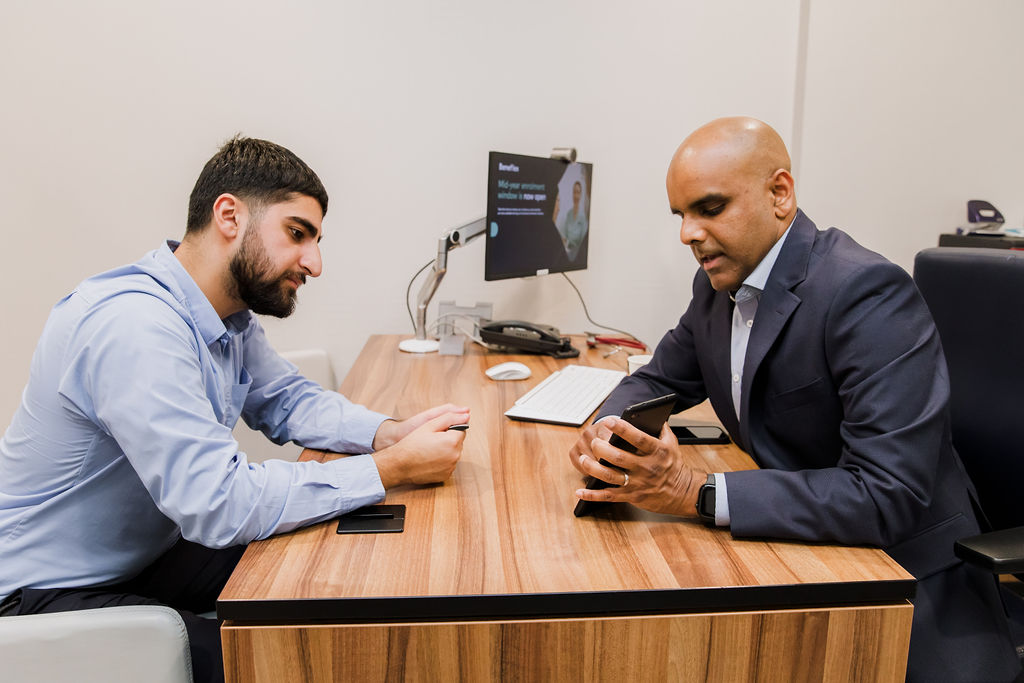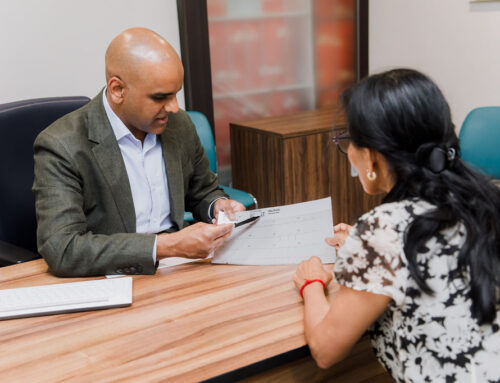Introduction
Wearable ECGs are becoming an increasingly common tool in cardiology, and I now use them regularly in my clinic. Many patients already have access to smartwatches like the Apple Watch, which includes a built‑in ECG function, or standalone devices such as KardiaMobile.
But what role do these devices really play in detecting heart rhythm problems? How accurate are they? Are they easy to use? And is a wearable ECG the right choice for you?
Let's start with a real patient story that shows just how useful these devices can be.
Patient Story: "Catching the Missed Heartbeat"
James (anonymised), a patient in his 20s, a semi‑professional footballer, came to see me after years of experiencing on‑and‑off palpitations. He'd already seen other cardiologists and had several tests, including heart scans, which all came back normal.
He'd had monitoring through the clinic too, but none of the tests coincided with the palpitations he was experiencing. Nothing had ever been captured, and so he was left without a diagnosis.
During our consultation, he told me how his heart rate had once suddenly jumped to 170 beats per minute during a football match, which he saw on his Fitbit. By the time he got home, his pulse had settled.
I recommended he try a KardiaMobile device to record an ECG the next time it happened. Sure enough, we managed to capture a significant heart rhythm abnormality — something conventional testing had always missed.
It turned out he had an accessory pathway, an extra electrical connection in the heart he was born with, causing abnormal rhythms. He eventually had an ablation procedure to treat it.
In his case, the wearable ECG was genuinely life‑changing.
What Are Wearable ECGs and How Do They Work?
Wearable ECGs are devices that let you record an electrical tracing of your heart rhythm outside of a clinic. They include:
- Smartwatches with ECG capabilities (e.g. Apple Watch, Fitbit Sense, Samsung Galaxy Watch)
- Handheld devices like KardiaMobile
- Wearable ECG patches used in clinical settings
The Apple Watch is one of the most widely used — and the one I have the most experience with in my practice. Devices like KardiaMobile are small, portable, and easy to use: you simply place a finger from each hand on the sensors, and it generates a rhythm tracing similar to a hospital ECG.
These devices work by detecting the electrical current generated by your heart and converting it into a graph (ECG) that shows both rate and rhythm. With good skin contact and a still position, the quality of recordings can be excellent.
🎥 Here's a quick demo of how to record an ECG using an Apple Watch:
Dr Sohaib demonstrates how to use the Apple Watch to record an ECG.
Wearable ECGs vs Pulse Monitors with AF Detection
It's important to understand the difference between a wearable ECG and a pulse monitor (such as a standard Fitbit or other fitness trackers).
- Pulse monitors measure your heart rate using light sensors on the skin, a method called photoplethysmography (PPG).
- Some devices, like Fitbit and Huawei watches, now include AF detection algorithms. They can alert you if your pulse appears irregular, which may suggest atrial fibrillation.
While this can be helpful, there are limitations:
- They don't record an actual electrical tracing of your heart
- They can be affected by movement, sweat, or poor skin contact
- An "irregular pulse" alert doesn't always mean AF, it could be something harmless like extra beats (ectopics)
By contrast, a wearable ECG device (such as the Apple Watch or KardiaMobile):
- Records your heart's electrical activity directly, like a hospital ECG
- Produces a tracing that can be shared with your doctor for review
- Provides much greater accuracy in detecting atrial fibrillation
In short:
- Pulse monitors with AF algorithms (e.g. Fitbit, Huawei) are useful screening tools
- Wearable ECGs (e.g. Apple Watch, KardiaMobile) provide clearer, diagnostic‑quality data
Both have a role — but for patients with symptoms or risk factors, a wearable ECG is usually more reliable.
What Can Wearable ECGs Detect?
Wearable ECGs are designed to identify abnormal heart rhythms — or arrhythmias. They can detect:
- Your heart rate (fast, slow or normal)
- Your heart rhythm pattern (regular or irregular)
Many devices also offer automated interpretations, alerting you if they detect signs of:
- Atrial fibrillation (AF)
- Bradycardia (slow heart rate)
- Tachycardia (fast heart rate)
AF is the most commonly detected condition and can significantly increase the risk of stroke or heart failure if left untreated.
How Accurate Are Wearable ECGs?
This is one of the most common questions I get asked, and the short answer is: they're reasonably accurate, particularly for detecting atrial fibrillation (AF).
Many devices, including the Apple Watch, KardiaMobile, and Samsung's ECG‑enabled watches, are FDA‑approved or CE‑marked, and have been validated in large clinical studies:
- The landmark Apple Heart Study enrolled over 419,000 Apple Watch users and found that irregular rhythm notifications matched confirmed AF on ECG patches about 84% of the time.
- Trials of the KardiaMobile ECG device show it is highly accurate, with sensitivity and specificity around 95–97% for detecting AF.
- A recent Samsung validation study confirmed that smartwatch ECG recordings have diagnostic accuracy above 90% when compared with physician‑reviewed 12‑lead ECGs.
However, like all tools, wearable ECGs aren't infallible:
- They may generate false positives (alerts when there's no real AF)
- They can miss short or sporadic episodes
- Movement artefacts or poor contact can affect accuracy
That's why professional interpretation is essential. You can export a PDF of your ECG tracing and share it with your doctor — who can confirm whether what the device flagged is a true abnormality.
When Are Wearables Most Useful?
These devices are especially helpful when:
- You experience occasional symptoms like palpitations or dizziness
- Standard tests have come back normal
- You need to monitor an existing rhythm problem to see how often it's occurring
- You want to check for recurrence after treatment (e.g. after ablation for AF)
They provide a valuable snapshot of what your heart is doing during symptoms, something clinic ECGs or even Holter monitors can easily miss.
Limitations to Be Aware Of
Despite their usefulness, wearable ECGs aren't a replacement for medical‑grade diagnostics.
Things to keep in mind:
- They may trigger anxiety if they show a concerning result that turns out to be normal
- They're less accurate in younger, healthy individuals without risk factors
- They can miss more complex arrhythmias like SVT unless a clear episode is recorded
That's why these devices should be seen as screening tools, not a final diagnosis.
What Should You Do if Your Device Shows an Abnormality?
First: don't panic. One abnormal reading doesn't necessarily mean you have a heart condition.
It's important to seek advice if:
- You're getting very high heart rates (e.g. over 150 bpm) at rest
- You're having frequent episodes of palpitations or irregular rhythms
- You have risk factors (age >60, diabetes, high blood pressure) and your device flags AF
A cardiologist can carry out a full assessment, which may include:
- A standard 12‑lead ECG
- A heart ultrasound (echocardiogram)
- Longer‑term heart rhythm monitoring
- Blood tests or other diagnostics
Often, the outcome is reassurance, but if something's found, you'll get the right treatment plan in place.
Which Device Should You Choose?
The Apple Watch and KardiaMobile are the devices I have most experience with — both are accurate and easy to use.
Other good options include:
- Fitbit Sense
- Samsung Galaxy Watch
- Huawei Watch
- Other CE/FDA‑approved ECG wearables
Whichever device you choose, make sure it allows you to save and share recordings with your doctor.
Final Thoughts: When to See a Cardiologist
Wearable ECGs can be a powerful tool in spotting heart rhythm problems early — especially in conditions like atrial fibrillation.
But they work best when paired with expert clinical input. If your device is showing irregular rhythms, or you're having unexplained palpitations, it's important to speak to a cardiologist.
📞 Concerned about an irregular heartbeat?
Book a private consultation to discuss your symptoms, review your wearable ECGs, and get clarity on what's really going on.




